After leaving Niagara-on-the-Lake, we had two options — tour the Eastman Museum in Rochester or explore Letchworth State Park. I had never heard of Letchworth before, but I quickly learned people call it the “Grand Canyon of the East.” That and the park earning USA Today’s Best State Park in 2015, led us to see it for ourselves.
The 14,000-acre park follows the western side of the Genesee River from Portageville to Mt. Morris, NY. But what makes it spectacular is the 600-foot gorges created by the river. We entered at the Castile Entrance and drove to Great Bend Overlook with panoramic views.
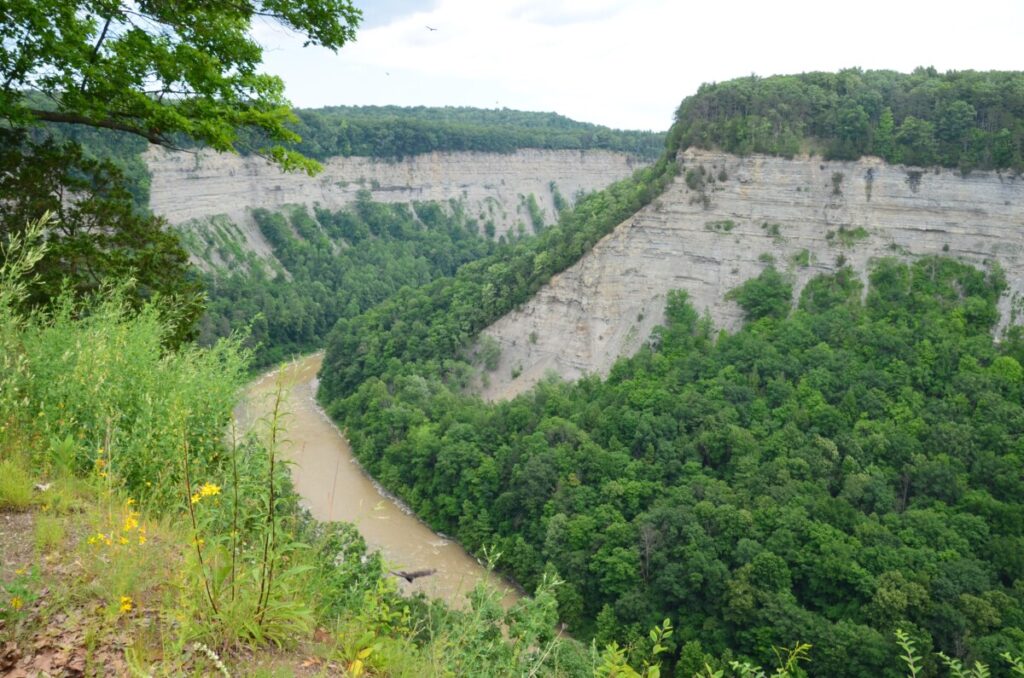
The park ranger at the visitor center pointed out three major waterfalls – the Upper, Middle, and Lower Falls. Most hikers flock to the area to walk the 7-mile (one way) Gorge Trail including the three falls and Inspiration Point. Since we wanted a smaller hike and rain loomed on the horizon, the ranger suggested parking near Glen Iris Inn and walking between the Middle and Upper Falls.
History of Letchworth and Glen Iris Lodge
Letchworth State Park began in 1907 with the gift of William Pryor Letchworth’s 1,000-acre estate, Glen Iris. A successful Buffalo businessman, Letchworth sought a retreat from the city. He purchased the grounds from Michael Smith and his business partner, Theodore Olcutt in 1859. The duo unsuccessfully tried to run a hotel and temperance house overlooking Middle Falls.
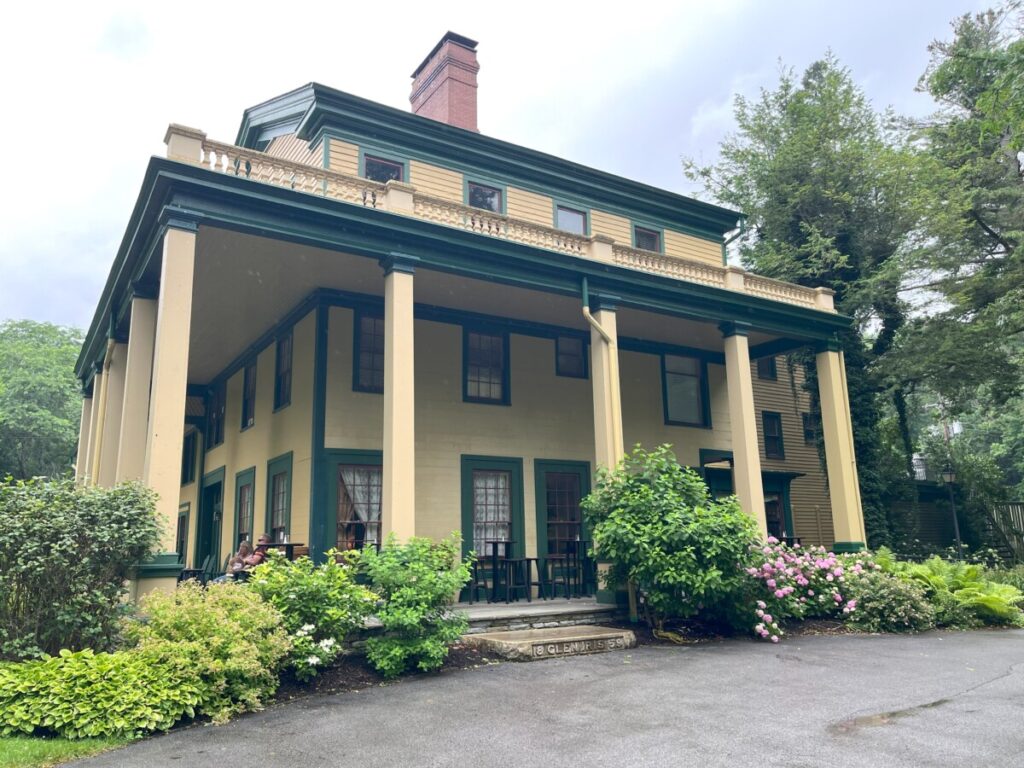
After purchasing the property, Letchworth made significant renovations, added a third floor, and hired renowned landscape architect William Webster to lay out paths and gardens. A life-long philanthropist, Letchworth also allowed visitors to walk the grounds and sit in the public reading room. After his death, the park opened Glen Iris as an inn, which operates today.
Middle Falls
We parked near Middle Falls, where Glen Iris Lodge overlooks. Raindrops fell so we decided to eat lunch inside the inn. Large picture windows gave us a glimpse into the garden area popular for weddings and other events. Our waitress mentioned that if we presented our park admission pass ($10), she would discount our meal by $10. We made money!
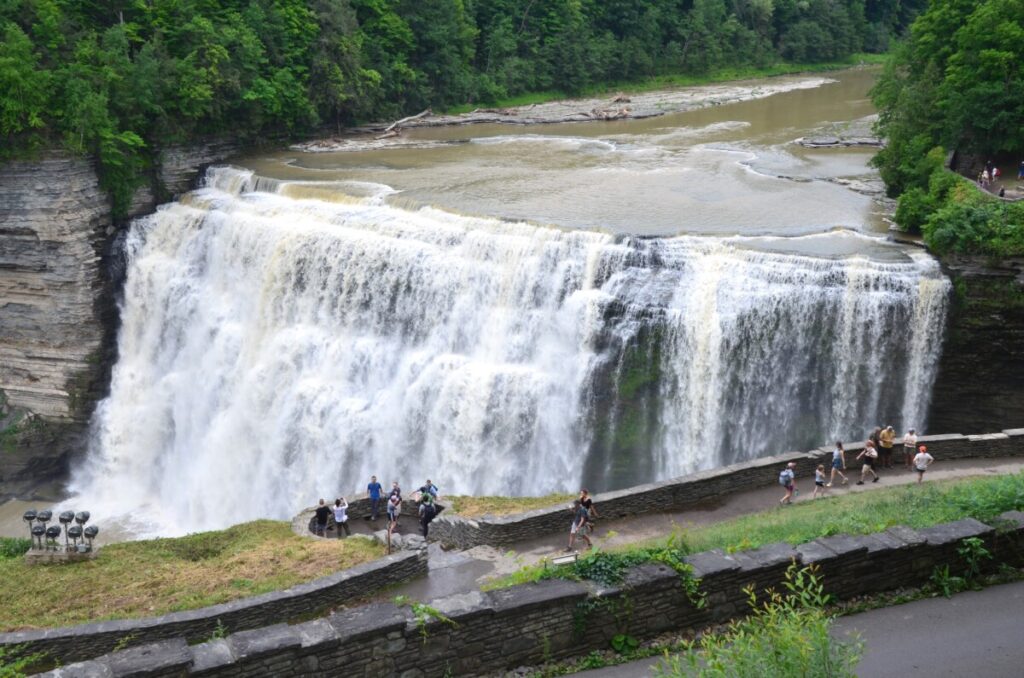
We descended the stairs outside the inn to view Middle Falls. The largest of the three waterfalls at 285 feet wide, Middle Falls roars down the steep slope in a stairstep pattern. A mill owned by Alvah Palmer sat next to the falls in the early 1820s when it was known as Portage Falls. One of William Letchworth’s goals was to let the area return to a more natural state. Today, no evidence of the mill exists.
Upper Falls
Between periods of rain, we continued along the Gorge Trail a short distance to the horseshoe-shaped upper falls. Lots of hikers with dogs accompanied us.
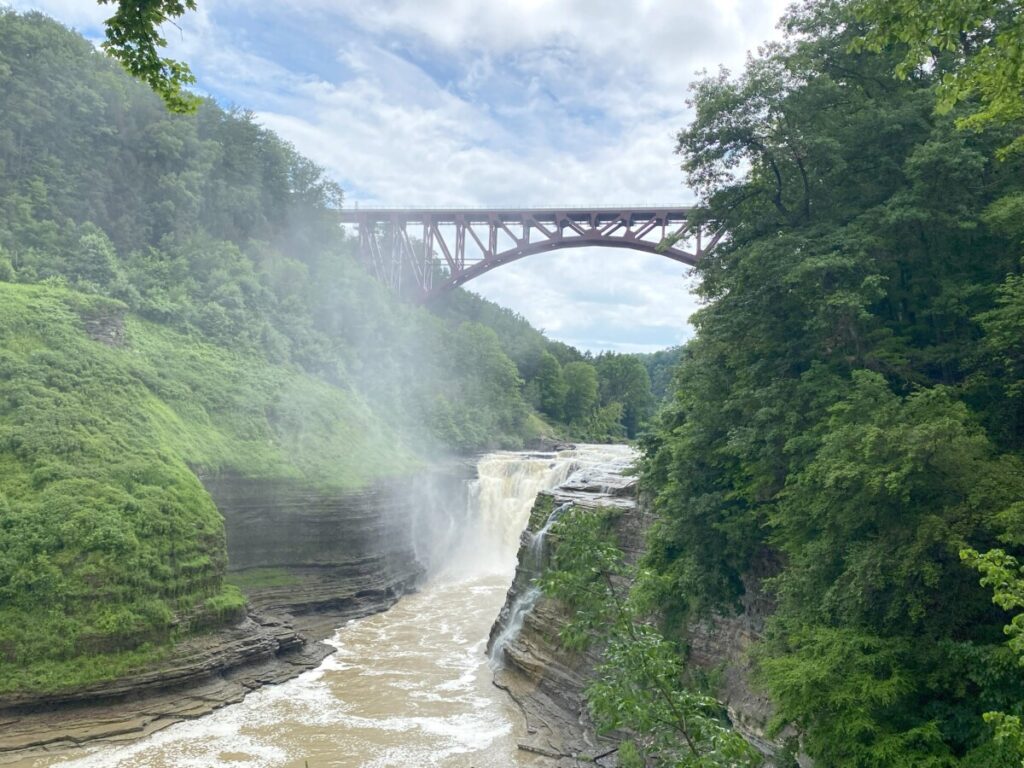
We couldn’t help noticing the railroad bridge spanning high above the river. Once we reached the top of the Upper Falls, the trail continued up many steps to the Upper Falls parking area. The bridge is only a few years old.
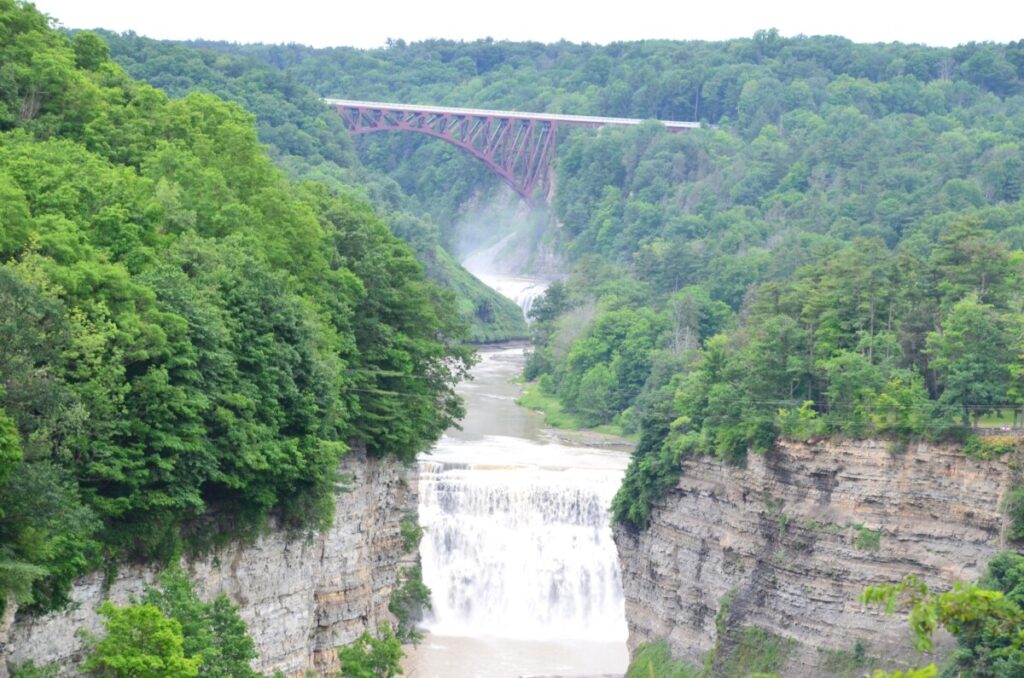
Genesee Arch Bridge
To enable freight and passenger train service between Buffalo and New York, engineers constructed the awe-inspiring Portage Bridge in 1852. Spanning 800 feet, the wooden bridge offered views of the Upper Falls and led to a railroad station and Cascade House Hotel on the eastern side of the river. Click here for pictures provided by LetchworthParkHistory.com. The wooden trestles remind me of a roller coaster.
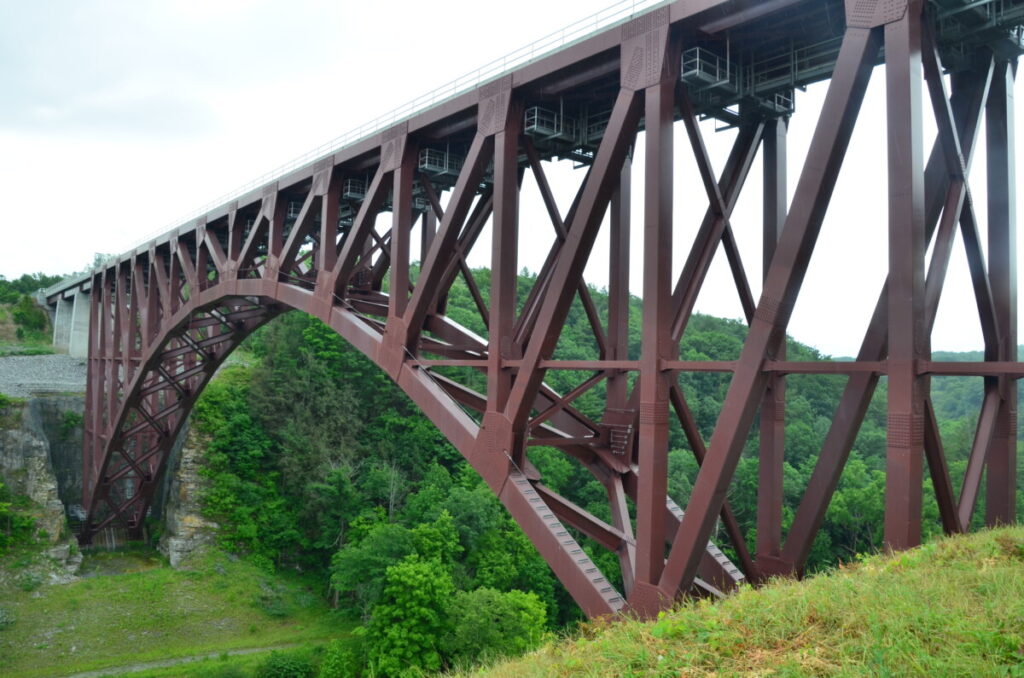
The bridge caught on fire in 1875 and was quickly rebuilt with iron. The new bridge, called the Iron Spider was built at half the cost of its predecessor in only 84 days. View the picture at LetchworthParkHistory.com website here. To the surprise of many, the bridge lasted well over 140 years.
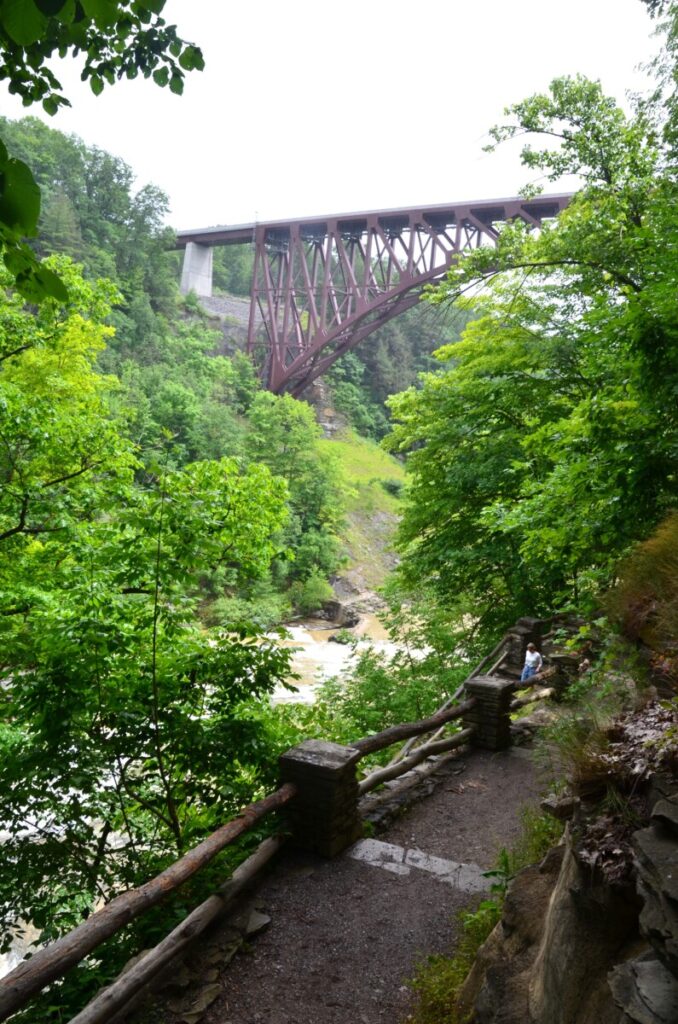
To keep up with industry safety standards, Norfork Southern dismantled the bridge (also called the Portageville Railroad Bridge) and completed the single-track Genesee Arch Bridge in 2017. Although many residents lamented the demolition of the Iron “Spider” Bridge, I think the new bridge is much more fitting for the scenic environment.
Lower Falls Recreation Area
The area near Lower Falls provides over 250 campsites, a playground, and a swimming pool. Several outfitters offer whitewater rapids tours and kayak rentals.
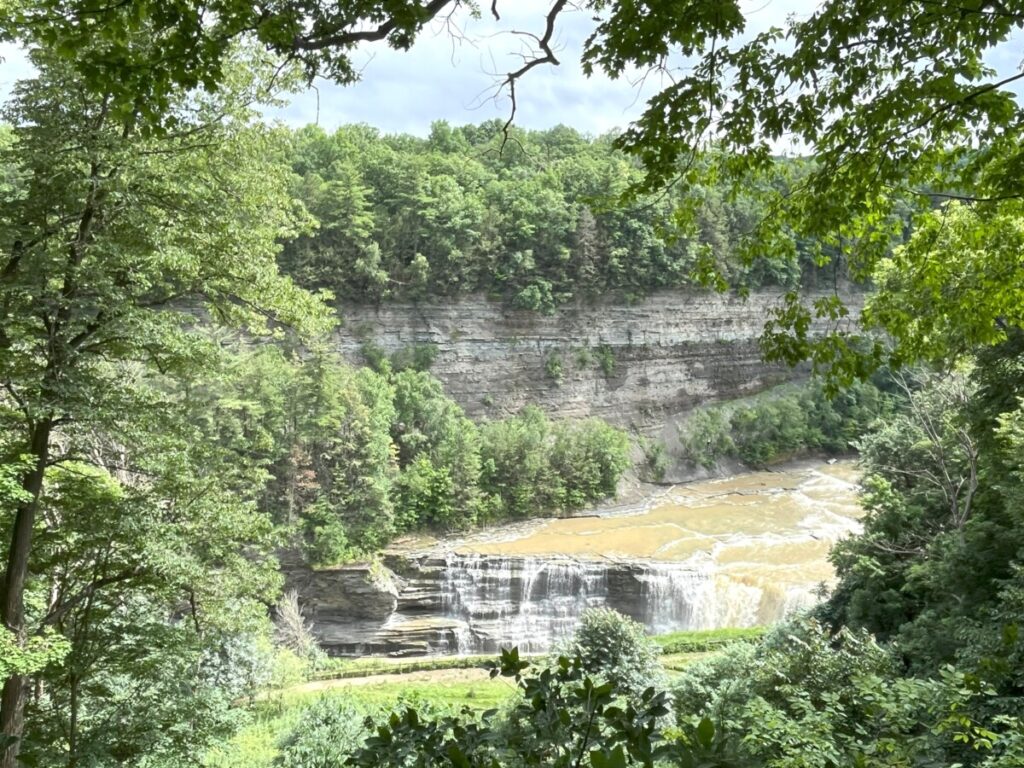
Parking at the Lower Falls lot, we walked about a quarter to a half mile to the Lower Falls viewpoint. By this time, we needed to get on the road to Ithaca so we didn’t stay long. In hindsight, I’d recommend skipping these falls because the trail didn’t offer many views of the river.
More to See and Do at Letchworth
We barely scratched the surface of this park and only focused on the southern section near Portageville. With 66 miles of trails, hikers have multitudes of ways to enjoy the majestic beauty Letworth offers. In addition to the three major waterfalls, the park encompasses more than two dozen other waterfalls. Click here to get a list and directions to them from NYfalls.com.
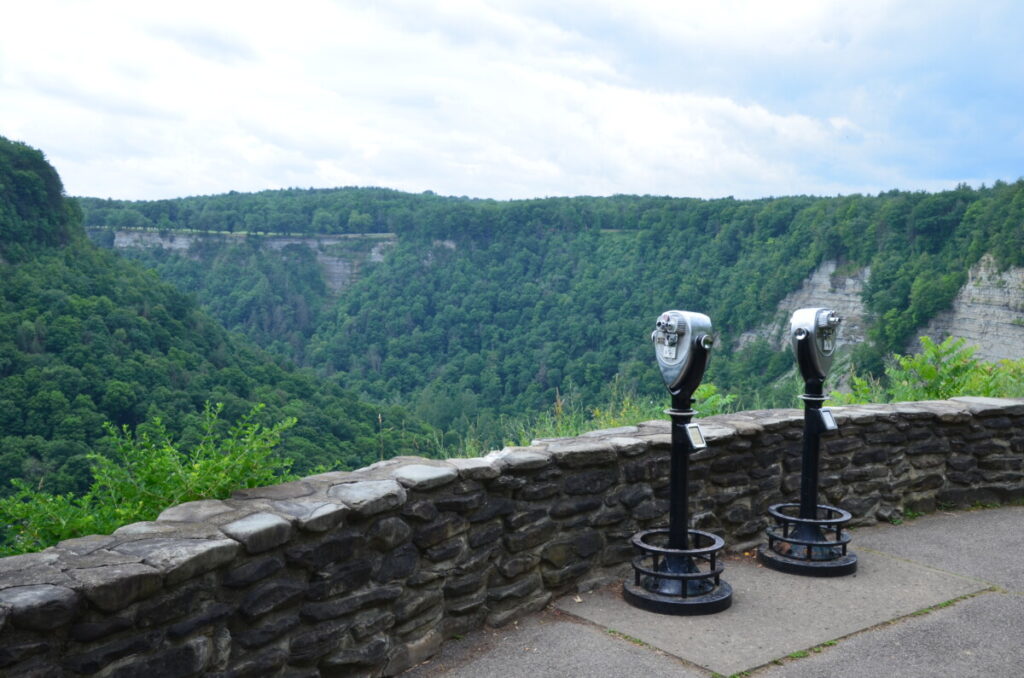
The history of the Seneca Indians intrigued William Letchworth. The tribe called the area “Sehgahunda” or Vale of Three Falls. In 1872, he moved the Seneca Council House from the nearby grounds of the former Caneadea Reservation to Glen Iris. Later, he brought the remains of “White Woman of the Genesee” Mary Jemison, a white teen raised by Native American Indians, and her daughter’s cabin to the area. Today, visitors can walk around the Council Grounds and see the Letchworth Museum (built on the former flower gardens. Unfortunately, we didn’t have time to explore this area.
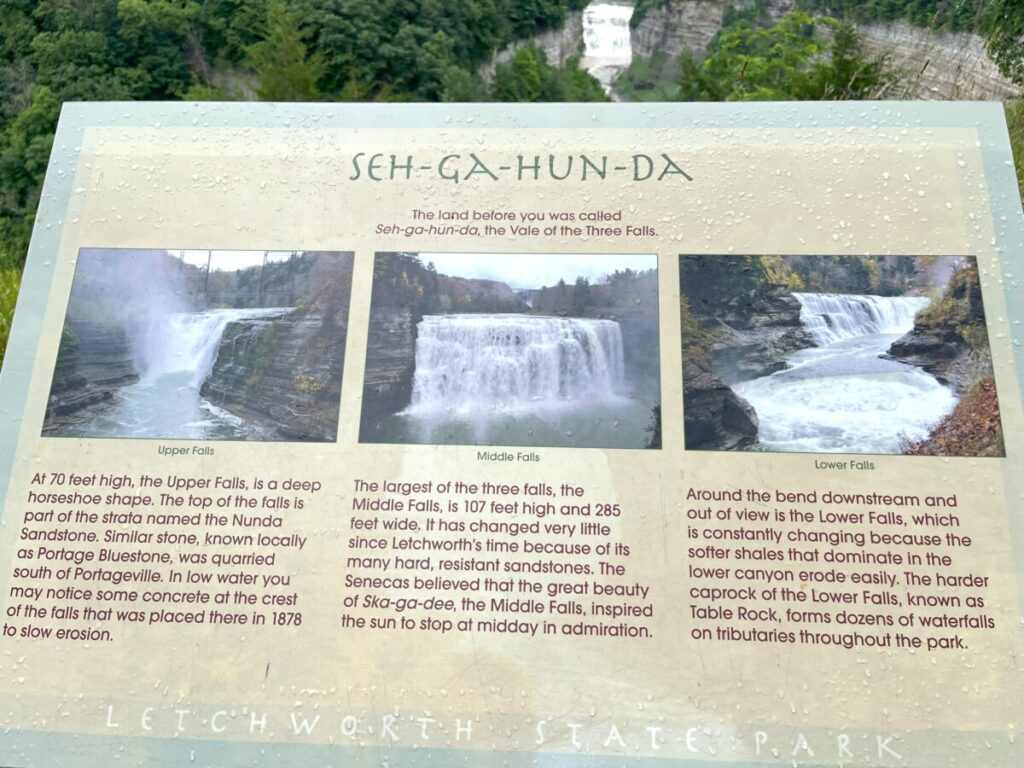
The Humprey Nature Center, located near the visitor center, provides educational exhibits. Outside, guests take delight in a butterfly garden, bird observatory, and trout pond. An unusual feature at Letchworth is the one-mile autism trail which provides eight sensory-friendly stations including the Music Circle and Reflection Knoll.
In Conclusion
Just 35 miles south of Rochester, Letchworth State Park provides beautiful canyon views, waterfalls, hiking trails, hot air balloon rides, and other activities. Admission is $10 but can go toward food purchases in the dining room at Glen Iris Inn. Click the Letchworth State Park website here for more information and trail maps.
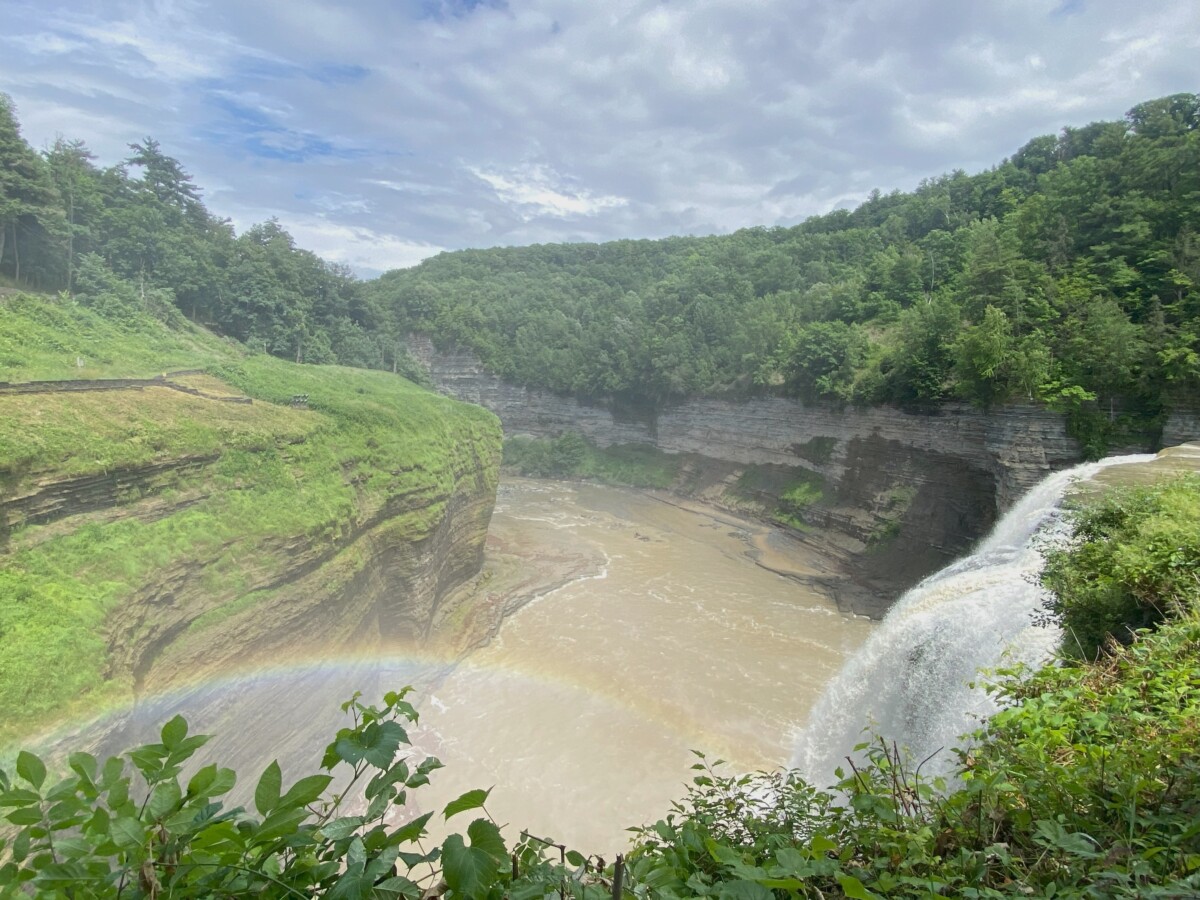
Pingback: Niagara Falls and Finger Lakes of New York Itinerary • Finding Family Adventures